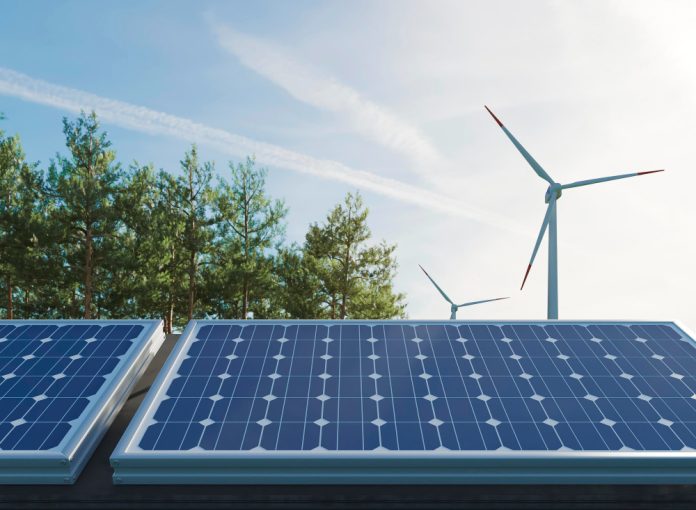According to the International Trade Administration, renewable and clean energy sources produce more than 80% of Kenya’s electricity. The largest major contributor is geothermal energy, which has an estimated potential of 10,000 MW. However, it is severely underutilized, with a current installed capacity of less than 863 MW. Despite this, Kenya is the world’s seventh largest geothermal generator, (https://www.thinkgeoenergy.com/thinkgeoenergys-top-10-geothermal-countries-2022-power-generation-capacity-mw/) with the 280 MW Olkaria IV plant being the largest.
Despite having a high potential for wind energy generation, wind power now accounts for around 16% of Kenya’s total electrical output. However, its percentage of energy generation is growing. The Kenya Vision 2030 plan seeks to develop 2,036 MW of wind power by 2030, accounting for 9% of overall maximum generation capacity. To meet this ambitious goal, Kenya is constructing various wind power production hubs while maintaining reliance on its three major wind farms: Lake Turkana Wind Power Station, Kipeto Wind Power Station, and Ngong Hills Wind Farms.
Some advantages of solar power include the use of solar water pumps and sprinklers, which can free up more land for agricultural production, while cooling technology can preserve food at the farm gate, increase farmers’ incomes, diversify crops, guarantee crop yield, and reduce food waste. This is doable because solar electricity is inexpensive and easily accessible, even in villages.
Local farmers can benefit from an existing range of solar cooling options, such as direct current (DC) fridges and solar cold rooms, which can help them produce dairy, meat, fish, fresh fruits and vegetables while also preserving milk. Solar-powered water pumps are transforming agriculture by providing dependable irrigation solutions, hence improving food security and farmer productivity. Hospitals and health centers already use solar for illumination, but solar cooling is gaining popularity as a method of preserving vaccines, drugs, and samples.
Solar micro-grids are increasingly being deployed in remote areas, providing electricity to communities previously without access. Companies like PowerGen and M-KOPA are leading in this sector, helping to decentralize energy distribution. Combining solar with battery storage and other renewable sources to ensure a stable power supply, even when sunlight is not available.
Companies like d.light and Bboxx are making solar home systems more affordable through pay-as-you-go models, significantly increasing rural electrification. New wind farms are being developed, including the ongoing expansion of the Lake Turkana Wind Power Project, which aims to increase its capacity and efficiency. The introduction of more efficient and larger wind turbines, capable of generating more power with fewer units, is improving the overall capacity and performance of wind farms.
Small-scale wind turbines are being deployed in communities and schools, providing localized energy solutions and reducing dependency on the national grid. Integration with solar panels and battery storage to create hybrid systems that ensure a continuous power supply, even when wind conditions are not optimal.
The Kenyan government has implemented advantageous feed-in tariffs to attract investment in renewable energy projects such as solar and wind. Regulatory frameworks should be strengthened to speed up the approval and execution of renewable energy projects. Increased collaboration between the government, corporate sector, and international organizations to fund and develop renewable energy infrastructure is allowing renewable energy to be adopted and used in a variety of locations across the country. Supporting local research and development to create and adapt renewable energy technology to Kenya’s specific demands and environment is critical to the country’s long-term viability.
Kenya has achieved great advances in renewable energy, particularly solar and wind power. The country is cementing its status as Africa’s renewable energy leader. The country’s dedication to solar and wind energy innovation is paving the road for a more sustainable and energy-secure future.




